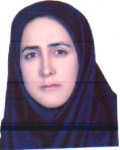| Authors | Malihe Sarabada, Hadis Bashiri, Seyed Mahdi Mousavi |
|---|---|
| Journal | CLAY MINER |
| Page number | 16 |
| Volume number | 56 |
| IF | 1.478 |
| Paper Type | Full Paper |
| Published At | 2021-03-01 |
| Journal Grade | Scientific - research |
| Journal Type | Electronic |
| Journal Country | Iran, Islamic Republic Of |
| Journal Index | JCR |
Abstract
Two novel adsorbents – montmorillonite (Mnt)-hyamine and Mnt-hyamine-sodium dodecyl sulfate (SDS) – were synthesized using Mnt nanoparticles. The modified Mnt and Mnt nanoparticles were used for the removal of crystal violet from water, and they were characterized using various techniques. The effects of pH, time, temperature, adsorbent dosage and initial dye concentration on the dye-removal efficiency were investigated using response surface methodology. The optimum conditions for maximum dye removal were obtained. The optimum conditions for crystal violet adsorption on Mnt-hyamine, Mnt-hyamine-SDS and Mnt nanoparticles are temperatures 25.00°C, 29.97°C and 27.28°C; pH values 9.00, 10.41 and 9.40; adsorbent dosages 1.00, 1.15 and 1.06 g L–1; and initial dye concentrations 30.00, 98.74 and 99.44mg L–1, respectively. The adsorbent dosage is the most critical variable for dye removal. Temkin and Langmuir are the best isotherms for studying adsorption equilibria. In the kinetic study, the fractal-like integrated kinetic Langmuir model was the most appropriate model, and the thermodynamic parameters were also determined. The synthesized adsorbents could be easily separated from solution. The Mnt-hyamine-SDS adsorbent has a high adsorption capacity (690.69 mg g–1) for the removal of crystal violet.
